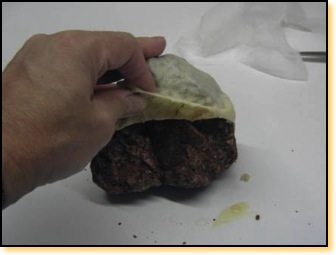PERMA-FLEX MOLD NO LONGER SELLS LATEX
Latex
is natural rubber extracted from rubber trees found
mainly in Southeast Asia. To make this rubber usable as a
mold material, the raw rubber is usually processed with
ammonia
and water. Latex is almost always brushed onto an original
model (not poured).

Advantages
--
Latex is a one-component system (no
weighing necessary) that is ready to use right out of the
container. Latex is relatively inexpensive. Latex is an
elastic mold rubber and molds are generally thin-walled,
strong
and exhibit good abrasion resistance. Because of its high
elasticity,
a feature unique to latex is its ability to be removed from
a
model like a glove. A latex mold will retain its shape
after being
repeatedly rolled up and away (and turned inside out) from
an
original model or casting – like a glove. Because of this
feature
and its resistance to abrasion, latex is commonly used for
making
“glove molds” in the reproduction of ornamental concrete
(lawn
ornaments and statuary). Latex molds are also good for
casting
wax and gypsum.
Disadvantages
--
Low-cost latex products generally
shrink – on the order of 10 to 20% depending on product.
Making molds with latex rubber is slow and time consuming.
Brush-on molds made with latex require as many as 20
brush coats, with 4 hours of drying time between each coat.
Time factor for making a brush-on latex mold is ten days or
more. Many latex products have an ammonia odor (however,
there are new latex products on the market with lower
shrinkage
and no odor). Latex molds are generally not suitable for
casting
resins.
PERMA-FLEX
MOLD NO LONGER SELLS LATEX
If you are interested in Latex, you may wish to contact
Chemionics Corporation



